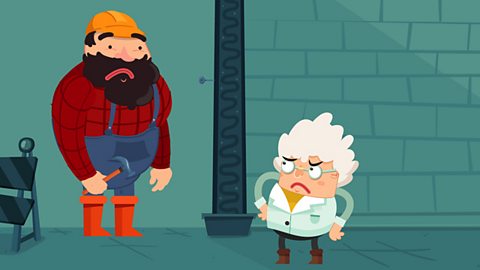Watch: Recap what you may already know about sound
Here's what you need to know about sound.
How are sounds detected
Sounds are made when objects vibrate. The vibration makes the air around the object vibrate and the air vibrations enter your ear. You hear them as sounds.
Watch: How the ear is designed to hear
Travel into this man's ear and learn how sound is detected.
To show you how sound is detected, this lovely lady is going to drive her spaceship into this gentleman's ear.
Whoa, whoa, stop! Stop! Stop!
Don't you think you've forgotten something important? You've got to use the shrinkifier.
Honestly! Ah that's better.
Now, we can see that the ear is just the right shape for picking up sound vibrations.
Excuse me, can you put on your special goggles? Good.
We can see those sound waves as they come in. They use the air to travel through.
And just down there we can see the ear drum. When sound waves touch it, it vibrates and sends a message to the brain.
What's that? You didn't know that's how ears worked?
Well, you'd better drive out very carefully, because ears are quite fragile…
The ear
Sound is detected when the vibrations enter your ear and send messages to your brain. Click on the image below to learn more about the different parts of the ear and the roles they play.
How does sound travel?
Sound waves can travel through solids (such as metal, stone and wood), liquids (such as water) and gases (such as air).
Watch: Investigating how sound travels
Watch the clip below to see how sounds travels through an experiment with the Science Museum Group.
Learn how sounds travels with the help of the Science Museum.
Activity 1: Fill in the gaps
Activity 2: Quiz
Bitesize Primary games. gameBitesize Primary games
Play fun and educational primary games in science, maths, English, history, geography, art, computing and modern languages.

More on Sound
Find out more by working through a topic
- count4 of 4

- count1 of 4

- count2 of 4
